
Article Summary: Glacier National Park Facts
Glacier National Park Facts! In this article, More Than Just Parks provides you with 15 amazing facts about one of America’s most magnificent national parks.
More Than Just Parks is your one-stop-shop when it comes to learning everything you’ll need to know about America’s national parks. We’ve got expert guides, beautiful photos, helpful tips, breathtaking films and so much more.
I’ve been to so many of these amazing places since retiring from teaching in 2018. Did I mention that I taught history? I spent a lifetime teaching about the history behind some of these natural wonders. Then I got to see them firsthand. And now I’m sharing some of the incredible stories about these beautiful places with you. It doesn’t get any better than that!
More Than Just Parks takes a deeper dive with its national park facts. We’ve done our homework so that you’ll get more than you bargained for.
Without further ado, let’s dive in.
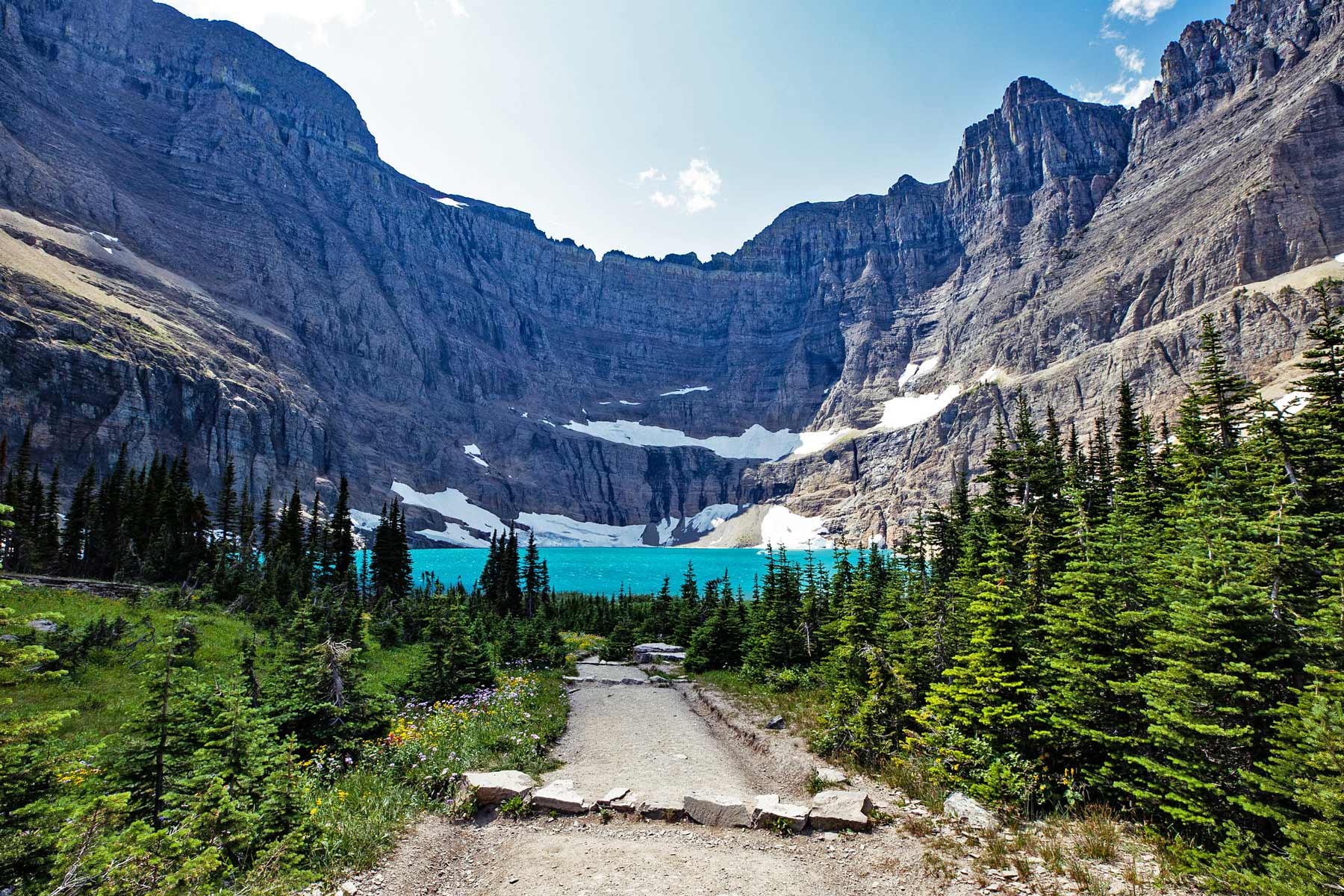
Table Of Contents: Glacier National Park Facts
Glacier National Park Facts
- Facts About Glacier National Park
- Glacier National Park Facts
- Top 5 Glacier National Park Facts
- 1. The Earliest Peoples To Inhabit Glacier Were The Kootenai
- 2. Lewis & Clark Enjoyed Spectacular Views Of Glacier National Park
- 3. A Man Who Lived Among The Native Americans Christened The St. Mary Lakes
- 4. A Railroad Tycoon Helped To Establish Glacier National Park
- 5. Glacier National Park Helped To Give Birth To “Parkitecture”
- Top 10 Glacier National Park Facts
- 6. A Cattle Queen Was One Of The Early Visitors To Glacier National Park
- 7. An Influential Editor & Conservationist Nicknamed Glacier The “Crown Of The Continent”
- 8. Glacier National Park Features An Engineering Marvel
- 9. The World’s First International Peace Park Is At Glacier
- 10. The Night Of The Grizzlies Changed How People Interacted With Bears At Glacier
- Top 15 Glacier National Park Facts
- 11. The Mountain Goat Is The Official Symbol Of Glacier National Park
- 12. The Number Of Glaciers At Glacier National Park Is Shrinking
- 13. The Going To The Sun Road Appeared In The Classic Film The Shining
- 14. There Are 762 Lakes In Glacier National Park
- 15. Glacier Features 71 Species Of Mammals, 276 Species Of Birds & 1,990 Total Species Of Plants
- Why Trust Us About Glacier National Park?
- Meet The Parks Brothers
- Map Of Glacier National Park
- List Of Glacier National Park Facts
- We Hope You’ll Follow Our Journey
- Top 5 Glacier National Park Facts
Facts About Glacier National Park
Some Basic Facts About Glacier National Park
Glacier National Park is a national park located in the state of Montana, on the border with Canada. It is known for its stunning landscape, which includes towering mountains, forests, lakes, and glaciers. The park covers over 1 million acres and is home to a wide variety of wildlife, including grizzly bears, wolves, mountain goats, and elk.
One of the main attractions of the park is the Going-to-the-Sun Road, a scenic roadway that crosses the park and provides panoramic views of the surrounding landscape. The park also has numerous hiking trails, including the famous Highline Trail, which takes hikers along the crest of a ridge with breathtaking views of the surrounding mountains.
In addition to its natural beauty, Glacier National Park has a rich cultural history. It is home to the Blackfeet Nation, who have lived in the area for thousands of years and continue to have a strong presence in the park. The park also has a number of historic lodges and buildings, including the historic Belton Chalet and the Lake McDonald Lodge.
Overall, Glacier National Park is a must-see destination for anyone interested in nature and outdoor recreation. It is a place of breathtaking beauty and a testament to the power of the natural world.
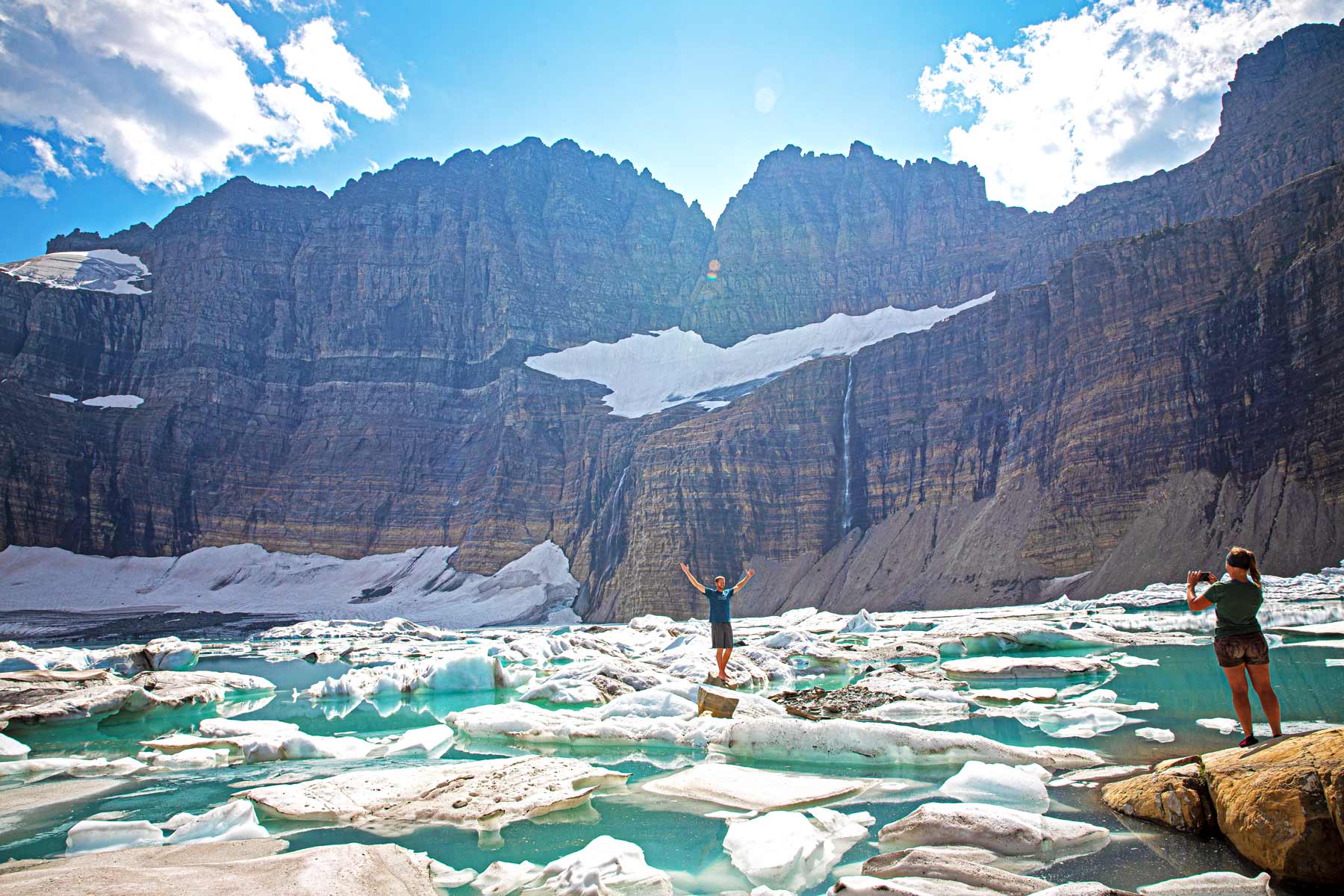
About Glacier National Park
Before we get to all of the wonderful things that you can do at Glacier, let’s begin with a short history lesson. Don’t roll your eyes. I promise it will be short and remember I don’t give any homework. After all I’m retired. And grading homework was never that much fun anyway.
As for Glacier, it officially became a national park in 1910. Fast forward to 2019 [I told you the lesson would be brief] and Glacier National Park is the 10th most visited park, making this one of the most popular national parks to visit in the United States.
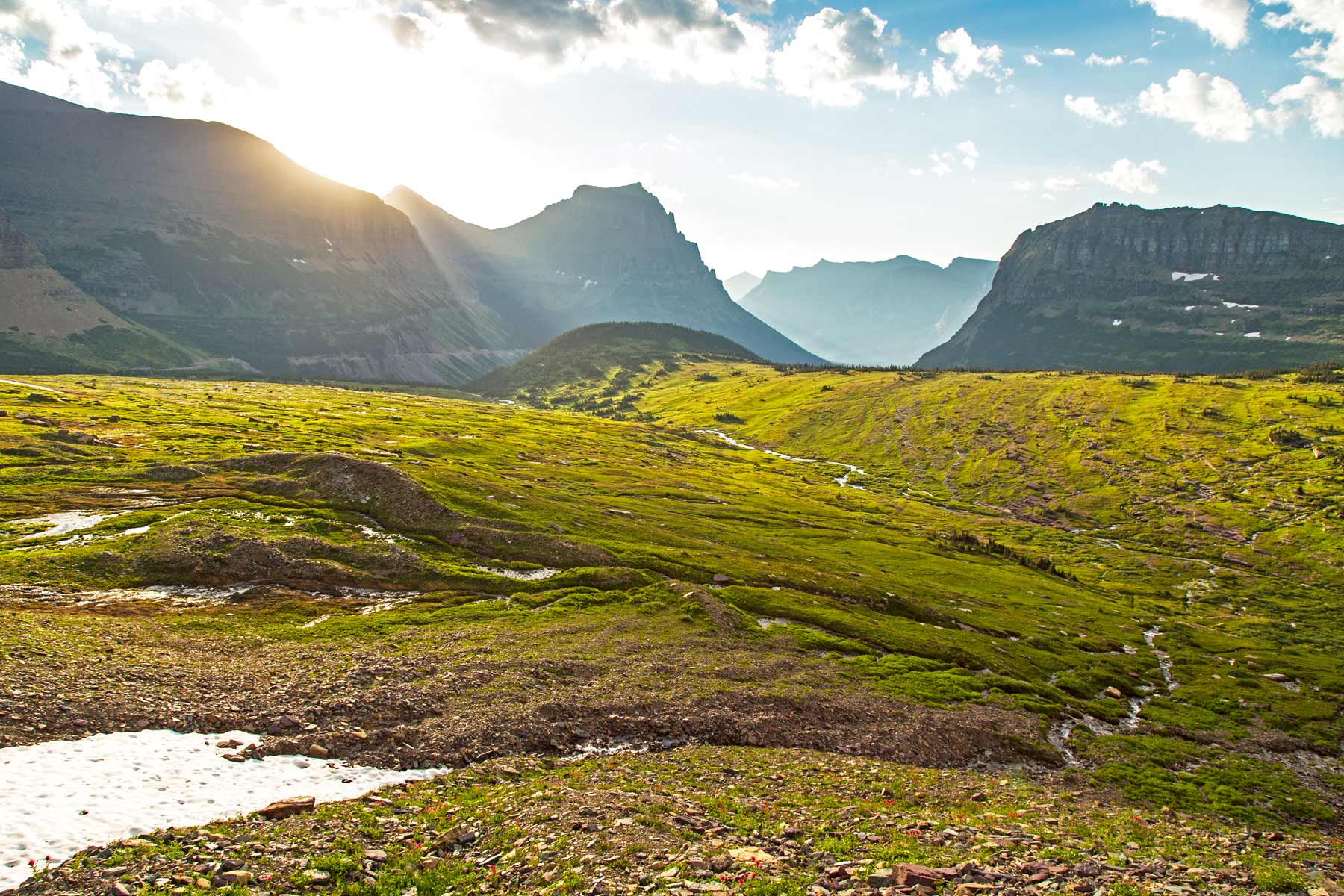
Looking for things to do in Glacier National Park on your next trip? Check out our article: 15 EPIC Things to Do in GLACIER National Park (Photos + Map) 2022
Here Are Some Basic Facts About Glacier
- Location: Montana
- Acreage: The country’s 10th national park, Montana’s Glacier preserves 1 million acres of glacier-carved peaks and valleys, pristine turquoise lakes and streams, and dense ancient forests for all to enjoy.
- Visitation: Glacier National Park in the United States attracted a total of approximately three million visitors in 2021.
- Highest Elevation: Mt. Cleveland is the park’s tallest peak, listed at 10,466 feet.
- Lowest Elevation: The lowest is the Middle Fork River near West Glacier at 3,215′.
- Average annual precipitation: In the driest corners of the park, along the northeast and northwest edges, rainfall averages 23 inches (58.4 cm) a year, while the lowlands of the west side receive about 30 inches (76.2 cm) of precipitation on average.
- When Did It Become A National Park? On May 11, 1910, President William Howard Taft signed a bill into law establishing Glacier National Park.
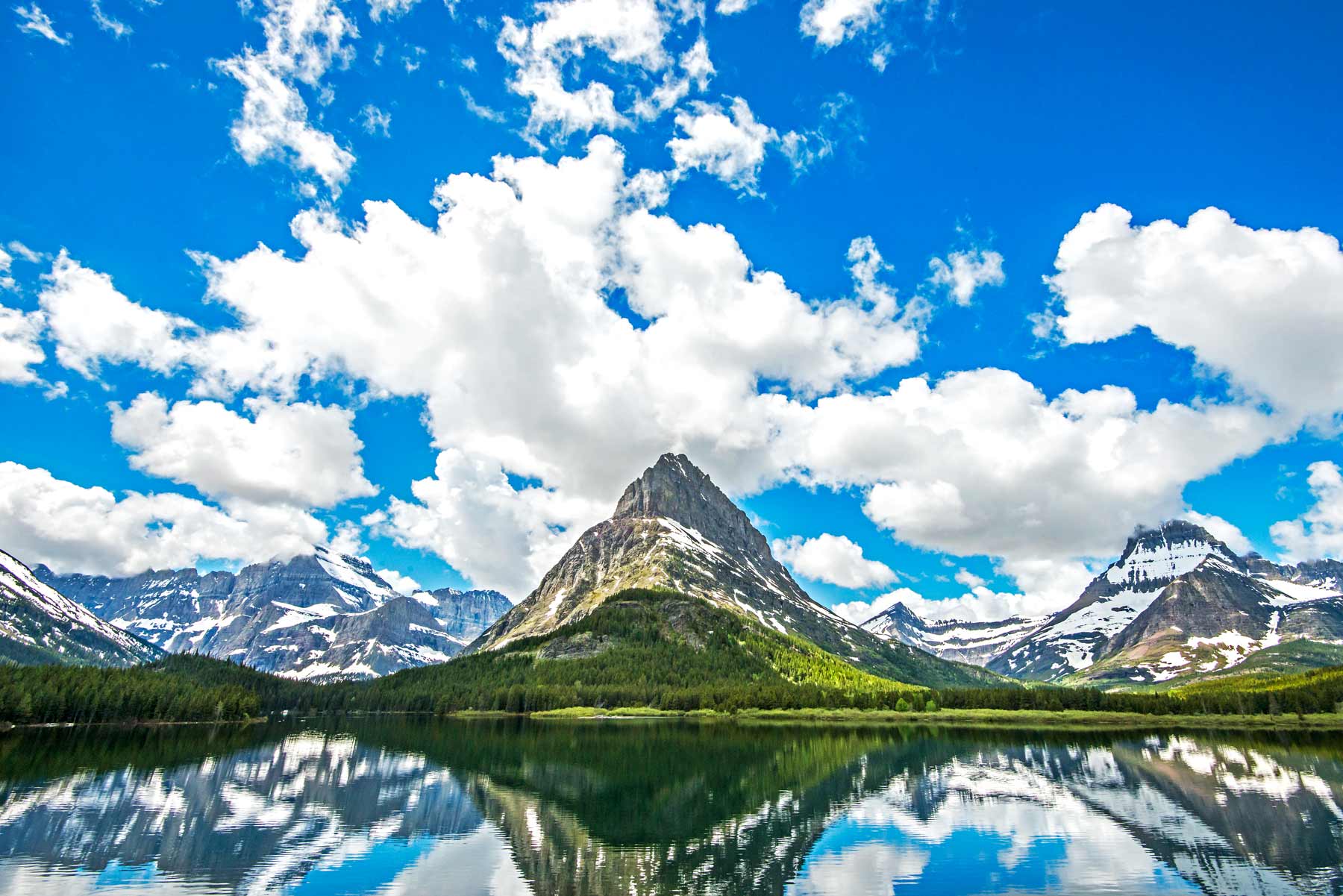
CHECK OUT: 8 AMAZING Alaska National Parks (Helpful Guide For Visiting)
Glacier National Park Facts
Top 5 Glacier National Park Facts
1. The Earliest Peoples To Inhabit Glacier Were The Kootenai
If you’re interested in origin stories then one of the most fascinating Glacier National Parks Facts involves the Kootenai.
10,000 years ago Native Americans known as the Kootenai made their seasonal rounds in the landscape that is now Glacier National Park.
The Kootenai people lived along the Kootenai River in Idaho, Montana, and British Columbia.
They were hunter-gatherers, and salmon was an important staple to their diets. They built winter villages of cone-shaped houses made from wooden poles and rush mats.

2. Lewis & Clark Enjoyed Spectacular Views Of Glacier National Park
If you’re interested in stories about famous explorers then one of the more interesting Glacier National Park Facts is that, according to their records, while Lewis & Clark never actually set foot in Glacier National Park, they did enjoy spectacular views of the land.
Legend also has it that the Corps of Discovery’s encounter with the Piegan Indians led to a fifty years of distrust between the Blackfeet and all whites irrespective of their intentions.
It’s also worth noting that this was the only time during the two explorers historic journey that they actually were forced to take lives in order to defend themselves.
One of the Corps of Discovery got into a scuffle with a Piegan who grabbed his gun. Reuben Field pursued him and wrestled his gun away from the man at which point Field was forced to draw his knife and stab the man to death.
If you’re interested in taking a deeper dive and learning more about the remarkable explorations of Lewis & Clark then I recommend: Undaunted Courage: Meriwether Lewis, Thomas Jefferson, and the Opening of the American West by Stephen Ambrose.
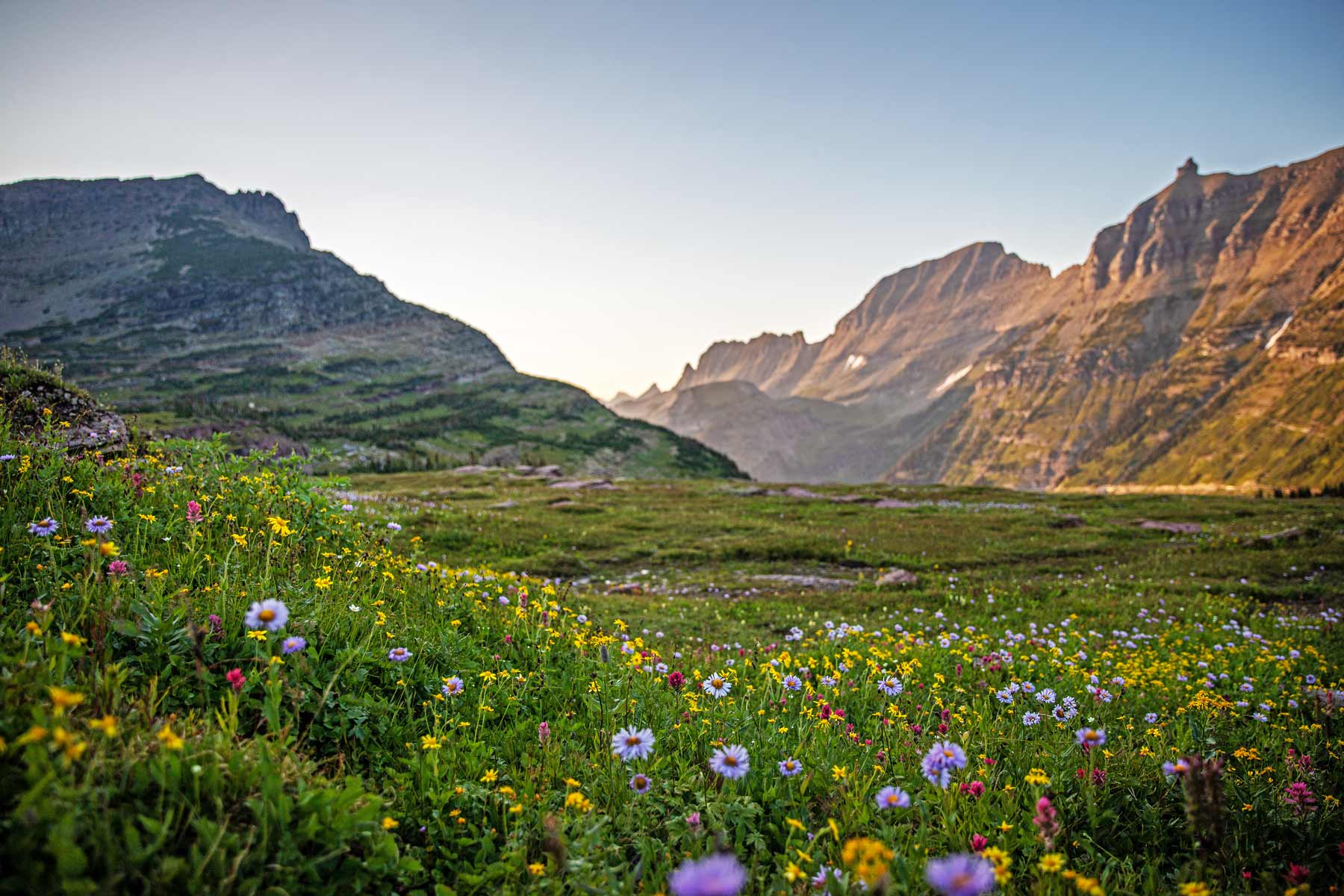
CHECK OUT: 25 Bucket List Famous Landmarks In America (MUST-SEE)
3. A Man Who Lived Among The Native Americans Christened The St. Mary Lakes
I love stories about the interesting people who became a part of the history of America’s national parks. In the case of Glacier, one of these people was a man by the name of Hugh Monroe.
According to the National Park Service, in 1817, Monroe came out of Edmonton House. His assignment was to learn the Blackfeet language and assure future trades at Edmonton House.
Hugh Monroe had no idea that this job would change his life. He was only seventeen years old when he was adopted by the Blackfeet people.
Later, Monroe married a Blackfeet woman, Sinopah, and together they raised a family.
It was through Monroe’s good reputation and history with the tribe which the way was paved for other whites to come into the area.
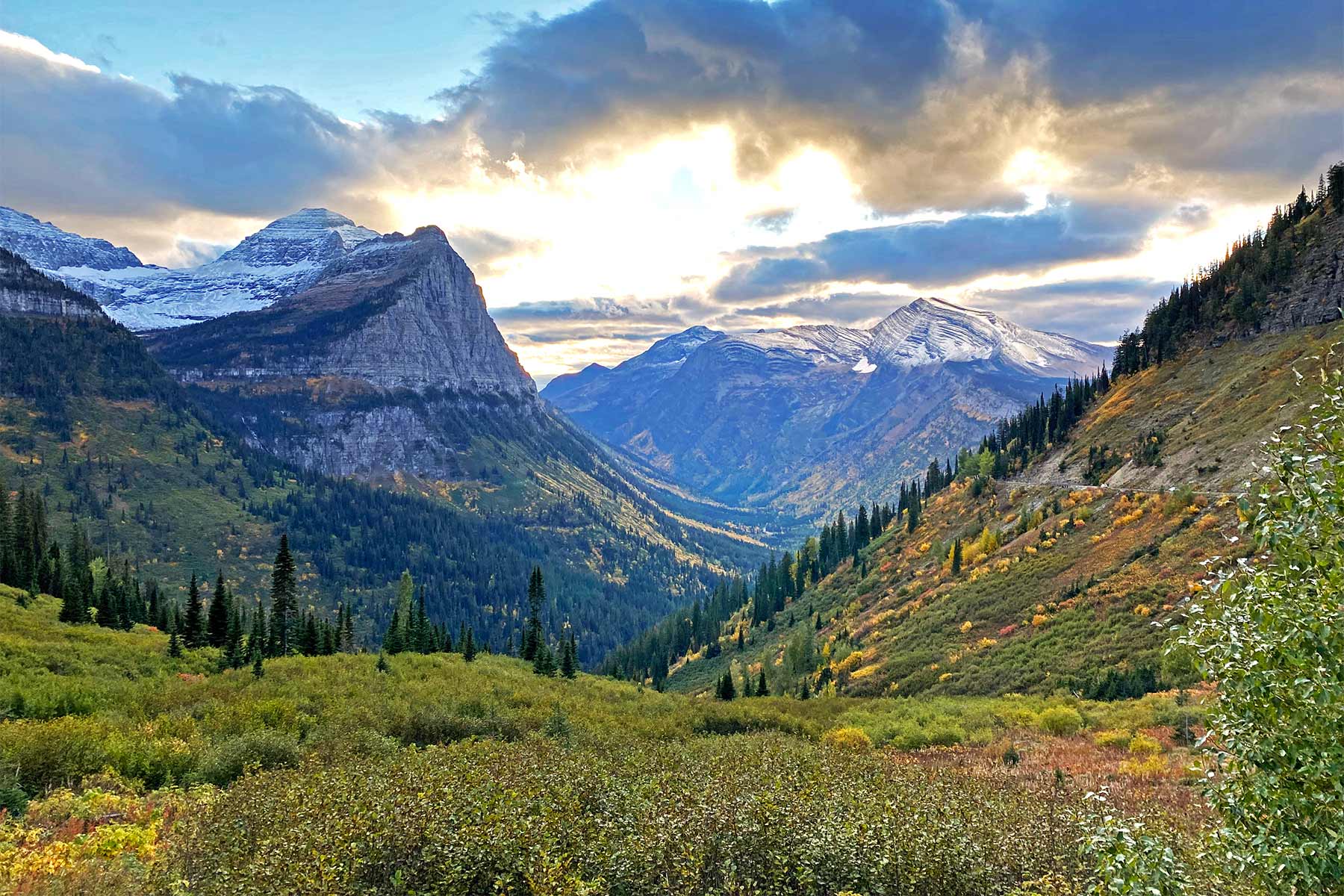
The First Caucasian To Discover St. Mary Lake
Historians believe that Monroe may have been the first Caucasian to discover the St. Mary Lakes. As a matter of fact, he may have been the first Caucasian to see Glacier National Park.
Between 1836 and 1845, Monroe held a ceremony to name the lakes at Glacier after the Virgin Mary.
He christened the St. Mary Lakes, which is another one of the fascinating Glacier National Park Facts.
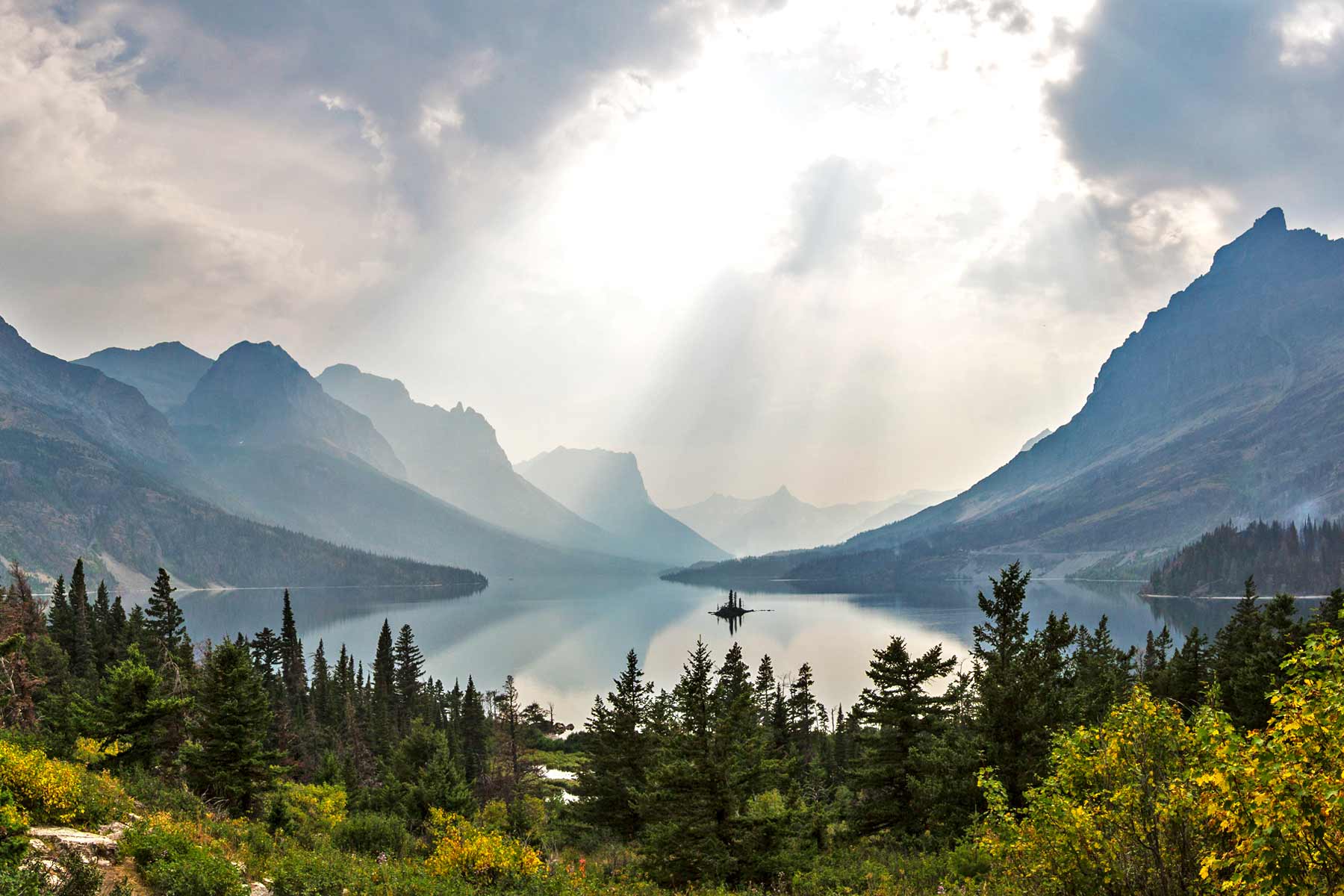
4. A Railroad Tycoon Helped To Establish Glacier National Park
The Great Northern Railway was the first, and for decades, the only major transportation system to bring people to Glacier National Park.
Another incredible Glacier National Park Fact is that James J. Hill, president of the Great Northern Railway, and his son Louis, were among the earliest supporters of a national park.
The Hill’s were enthusiastic advocates for the preservation of Glacier’s lands.
They funded and led a public relations campaign to convince Congress to designate this area as a national park. Congress agreed and President William Howard Taft signed the bill into law on May 11, 1910.
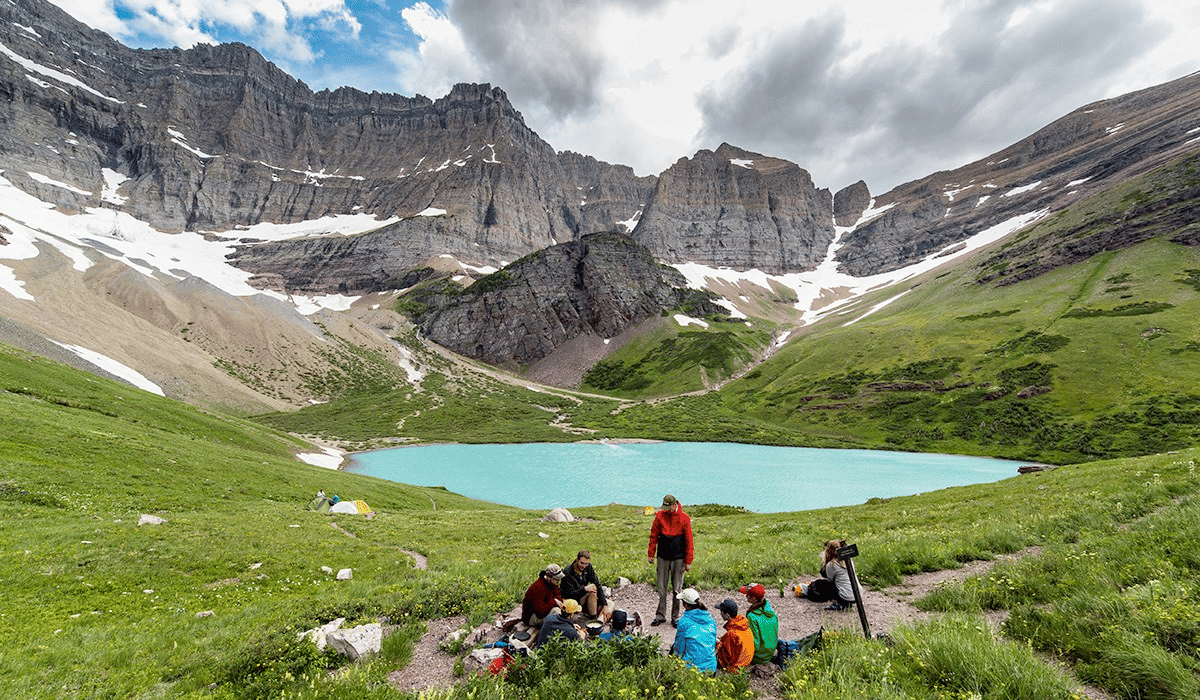
See America First
James J Hill understood that the Great Northern could not grow and prosper unless their were interesting places for passengers to travel.
Louis Hill, who was a passionate advocate for America’s public lands, led a campaign to encourage Americans to “See America First.”
Up on the mountains of Glacier National Park the air is laden with the fragrance of pine and hemlock that grow tall and stately in the valleys and on the mountain sides, or it blows to you alive with vigor from illimitable space above the taller peaks. Your eyes view a region of beauty at your feet, your ears hear the music of a primitive world and heed the silence of great places. Life is different in Glacier National Park-you can freshen up there.
-advertising brochure from the see america first campaign
People traditional traveled to Europe for summer vacations, but the Hills believed that they could give Americans an opportunity to have a comparable vacation experience while remaining in the United States.
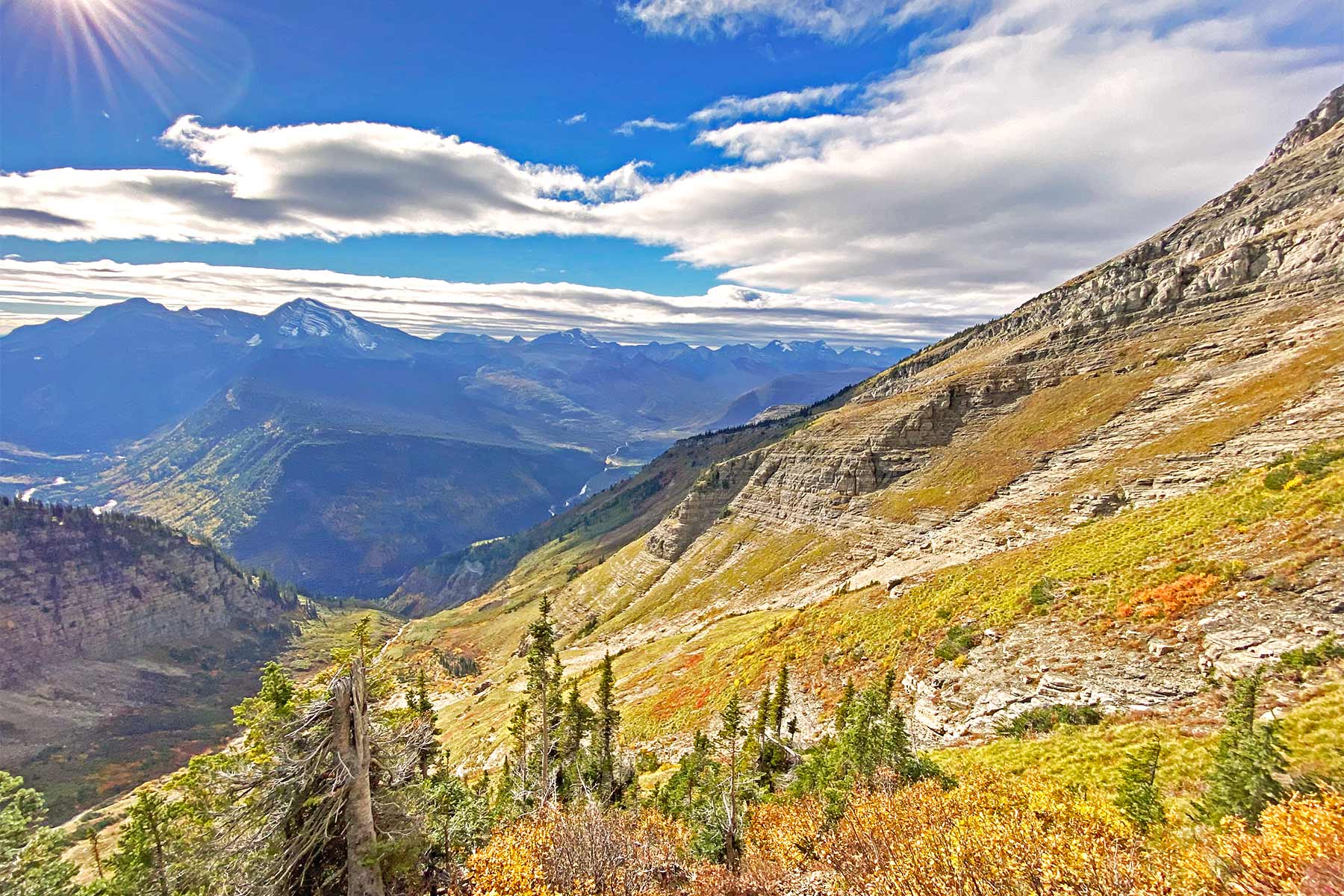
While visitors can now travel to Glacier by car, they can still ride the rails too.
Travelers can take Amtrak’s Empire Builder from the Midwest to East, ride through the Marias Pass at the highest point on the railroad’s route and stop at Beltron Depot to visit the park.
CHECK OUT: 11 FASCINATING Crater Lake National Park Facts
5. Glacier National Park Helped To Give Birth To “Parkitecture”
One of my favorite Glacier National Park Facts is that, as part of his “See America First” campaign, Louis Hill wanted to rival Europe’s Swiss Alps.
To do this he adopted the design features of Swiss Chalets as part of the accommodations offered at Glacier National Park.
Hill spent $200,000 to build a chain of hotels that were what he referred to as “chalet colonies.”
In doing so, Glacier National Park helped give birth to what became known as “Parkitecture.” It was an innovative new design which would transform the park into what Hill and his supporters called the “American Alps.”
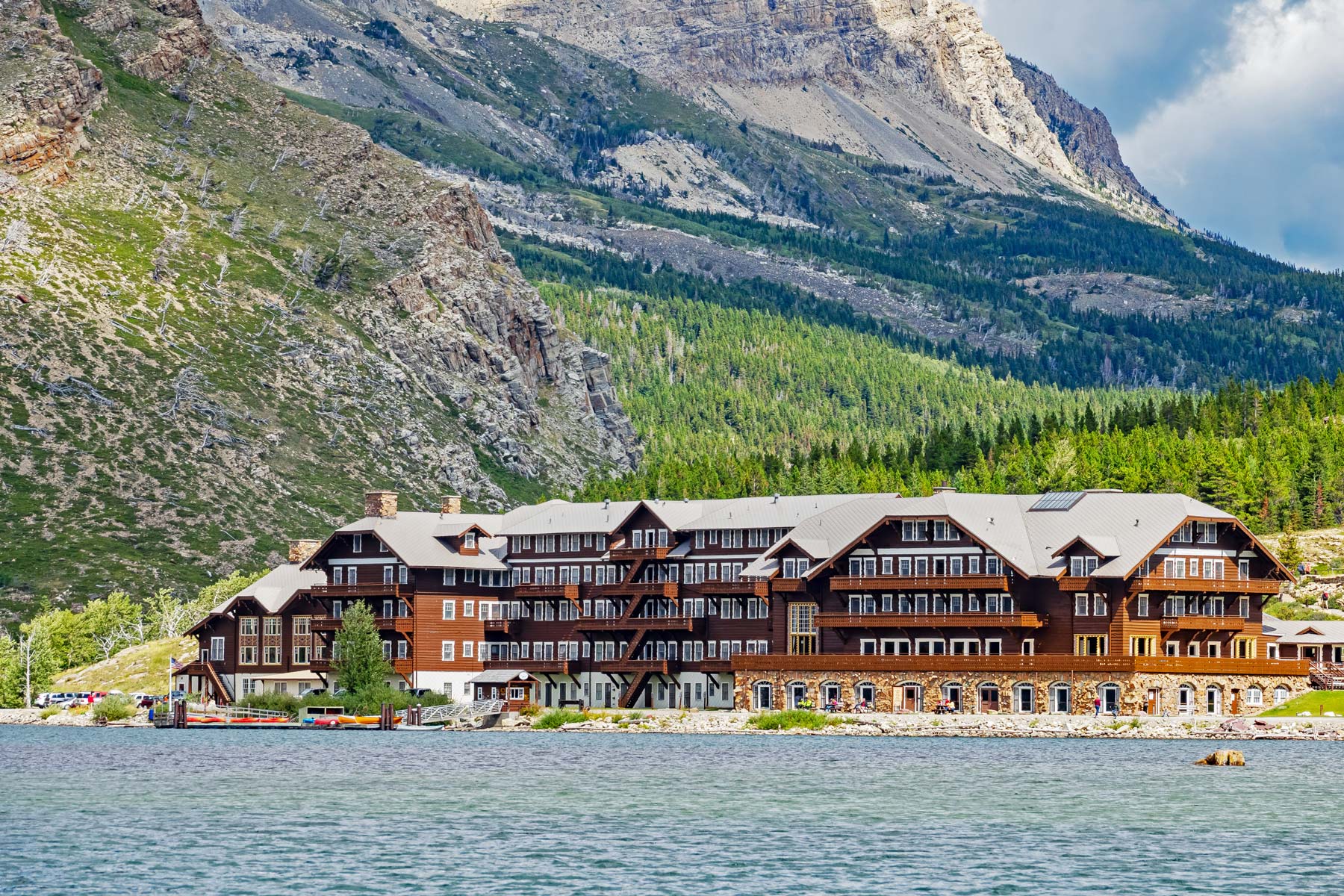
Louis Hill took great pains to ensure that the lodges were built to last, even taking a break as the manager of the Great Northern to focus on making sure the design and construction of the Glacier Park Lodge.
Once the hotel was up Hill ushered visitors into the park and into his lodge where then, as today, folks enjoy amazing scenery both from the lodge and through Jammer bus tours, hiking and other activities.
Other Glacier Park Lodges include:
Lake McDonald Lodge: Located on the shores of Lake McDonald this lodge is one of the most popular in the park. Lake McDonald Lodge offers lodge rooms and cabins.
Silver Wolf Log Chalets: Located just minutes from the park’s west entrance, Silver Wolf Lodge offers a quiet retreat from kids, noise and everyday routine.
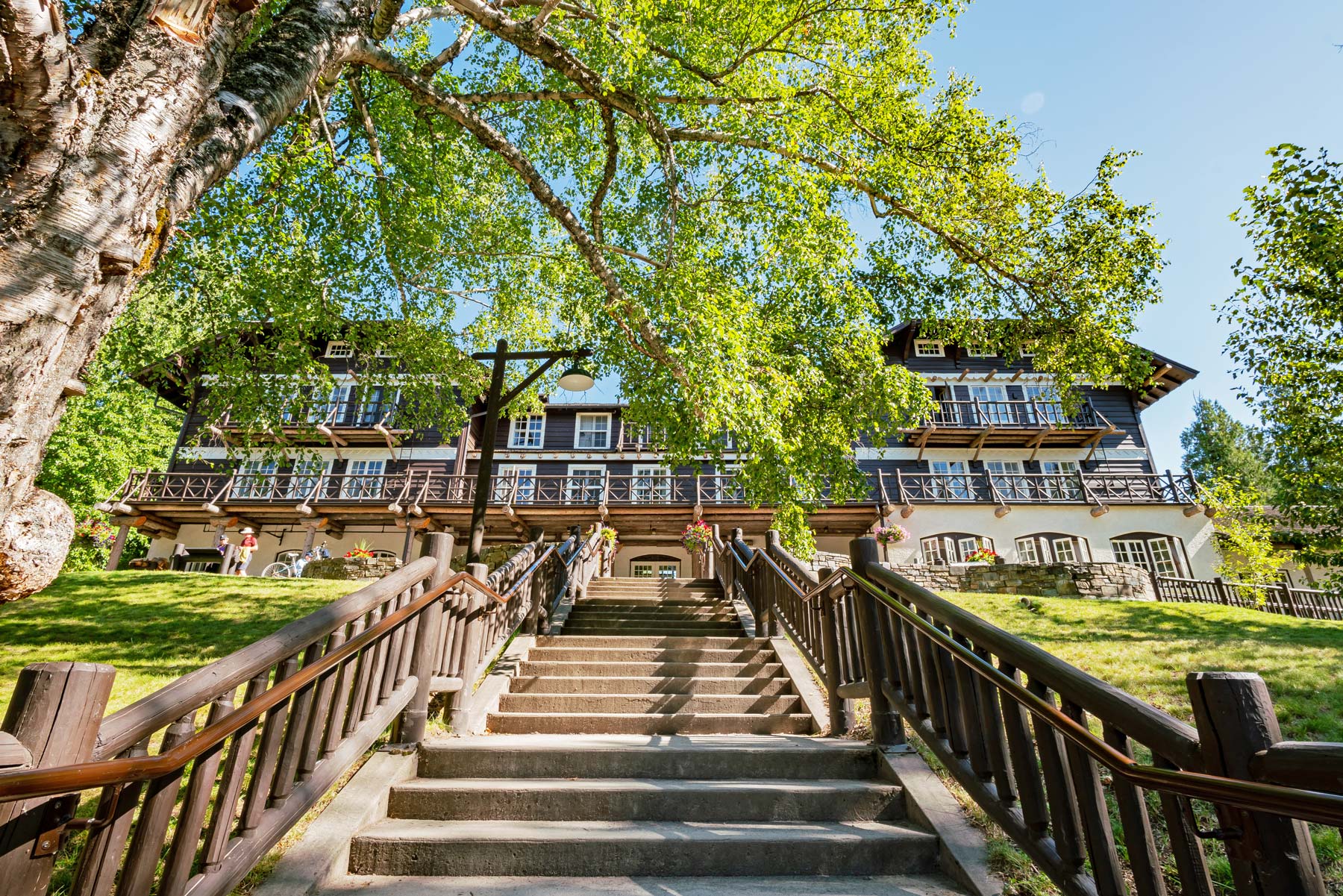
Top 10 Glacier National Park Facts
6. A Cattle Queen Was One Of The Early Visitors To Glacier National Park
Just when you thought we couldn’t come up with any more unbelievable Glacier National Park Facts we’ve come up with another one. One of the most interesting people to become a part of the Glacier National Park story was the “Cattle Queen of Montana.”
Mrs. Elizabeth Collins, wife of rancher Nathaniel Collins of Choteau, Montana, became the first woman to ride the train with her cattle from western Montana to Chicago and may have also been the first Caucasian woman to see the spectacle that would become Glacier National Park.
Collins came from a small farm town in Iowa. In a man’s world, she came to Montana where she gained employment as a mining camp cook before becoming a miner herself.
Mrs. Collins went back to ranching, but a couple of years later got “gold fever” and headed for the Klondike. Eventually she returned to Choteau where she tended her sick husband until he died. Finally, the “Cattle Queen” sold her ranch and moved to California.

Here’s A Glacier National Park Fun Fact
Now here’s a fun fact. There was a 1954 movie titled, The Cattle Queen of Montana starring Barbara Stanwyck and Ronald Reagan.
Though the film’s title may have been inspired by the real life story of Elizabeth Collins, the film itself was the story of a defiant female rancher Sierra Nevada Jones (Barbara Stanwyck) who swept into Montana, received a hostile welcome from a tribe of Native Americans after attacking her cattle and leaving her father dead.
If you’re interested in learning about the real “Cattle Queen of Montana,” however, then I recommend: The Cattle Queen of Montana by Charles Wallace and Elizabeth Smith Collins.

CHECK OUT: 10 EPIC Montana National Parks Worth Visiting
7. An Influential Editor & Conservationist Nicknamed Glacier The “Crown Of The Continent”
One of my favorite Glacier National Park Facts involves George Bird Grinnell: America’s First Environmentalist.
Grinnell was the editor of Forest and Stream magazine. He first came to Glacier National Park in 1885. He would return for the rest of his life.
Grinnell gave the park its nickname: the “crown of the continent.”
Now how many folks actually have a national park landmark named after them? George Bird Grinnell had three!
As one of the first Americans to visit and record his impressions of Glacier, Grinnell would have the honor of having a glacier, a lake and a mountain named after him.
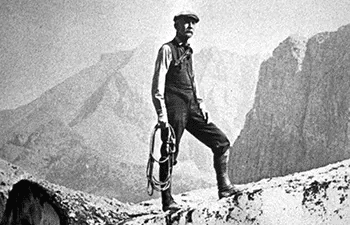
From the time he first dreamt of it becoming a national park in 1891, he worked tirelessly to gather support for this idea. Grinnell’s editorials in Forest and Stream, as well as his efforts to lobby political leaders such as Theodore Roosevelt and William Howard Taft, would finally bear fruit when Glacier became a national park in 1910.
To learn more about George Bird Grinnell, I recommend: Grinnell: America’s Environmental Pioneer and His Restless Drive to Save the West by John Taliaferro.

Learn More About The Greatest Environmentalist You’ve Never Heard Of: George Bird Grinnell – America’s First Environmental Activist
8. Glacier National Park Features An Engineering Marvel
Stephen Mather, who became the first direction of the National Park Service, wanted to have a road built in Glacier National Park. It would be not just any road however. It would be an engineering marvel.
Between 1921 and 1933, when the entire length of Going-to-the-Sun Road was opened to the public, it cost $2.5 million, 490,000 pounds of explosives and three lives to build – built by men armed with shovels, hammers, hemp climbing ropes and explosives, according to the April 1937 issue of Pacific Builder and Engineer.
It is one of the world’s most dramatic roadways.
Since its dedication, millions of motorists have passed through the entrance gates and ventured into the park’s wild interior, transported on a two-lane roadway to an otherworldly landscape.
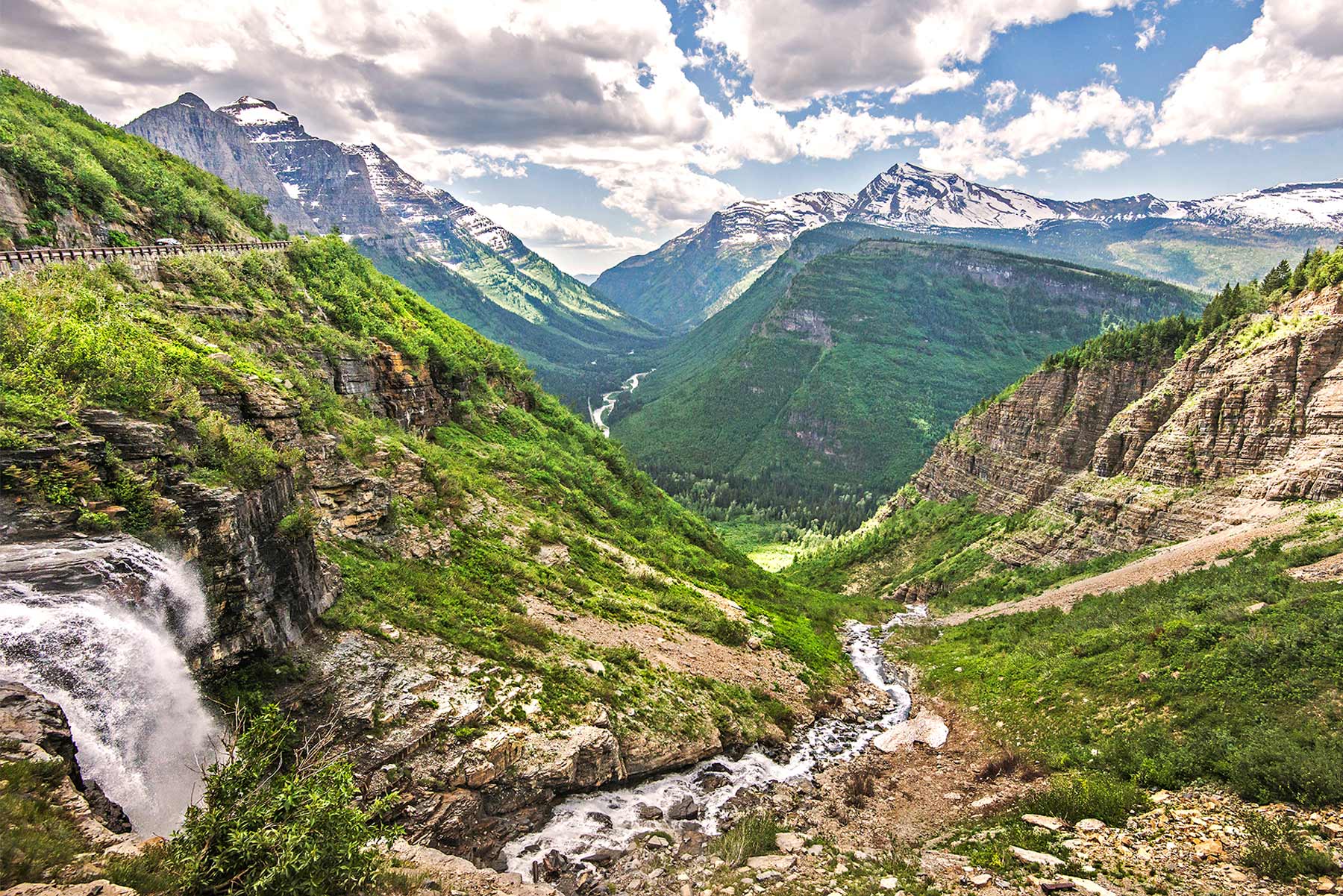
9. The World’s First International Peace Park Is At Glacier
Another truly amazing Glacier National Park Fact is that it’s the world’s first international peace park.
In 1932, Waterton Lakes National Park (Alberta, Canada) was combined with the Glacier National Park (Montana, United States) to form the world’s first International Peace Park.

What Is An International Peace Park?
So, what is an International Peace Park? A “Park for Peace” is a special designation that may be applied to any of the three types of Transboundary Conservation Areas, and is dedicated to the promotion, celebration and/or commemoration of peace and cooperation.
According to the International Union for Conservation of Nature (IUCN), Parks for Peace can serve several purposes.
They may celebrate the endurance of peace and the commemoration of peace in a region: for instance, Waterton-Glacier International Peace Park is a good example of a Park for Peace established to celebrate longstanding peaceful relations between Canada and the USA.
The Waterton-Glacier International Peace Park is also a UNESCO World Heritage Site, meaning that it is a place of special significance to the world.
10. The Night Of The Grizzlies Changed How People Interacted With Bears At Glacier
One of the most compelling Glacier National Park Facts concerns an event in park history which became known as The Night Of The Grizzlies.
Before I relate the fateful events of that night, it’s important to know that before 1967 the park made it easy to get much closer to grizzly bears than the National Park Service recommends today.
At a matter of fact, in a practice that was popularized by Yellowstone National Park and used in other western parks, the bears regularly visited sources of human food while visitors watched these huge animals tear apart trash dumps.

Things Changed On August 12, 1967
On the afternoon of August 12, 1967, seven young park employees set off on long hikes for overnight camping. That night, Julie Helgeson, at a campsite near Granite Park Chalet, was attacked and killed by a grizzly; Roy Ducat was severely mauled.
That same night Michele Koons was also killed by a grizzly while camping at Trout Lake; Paul Dunn and three other campers escaped by climbing trees.
For everyone involved, it was an unforgettable night of crisis, intense fear, bravery and, ultimately, grief. But it was also a night that marked a watershed moment for bear management, a night that many would later say, “changed everything.”
So, what’s the moral of this story? Seeing a bear in the wild is a special treat for any visitor to a national park. While it is an exciting moment, it’s important to remember that bears in national parks are wild and can be dangerous.
Their behavior is sometimes unpredictable. Although rare, attacks on humans have occurred, inflicting serious injuries and death as was evidence in Glacier National Park by the tragic events of August 12, 1967.
It’s important to stay safe around bears which is why the National Park Service provides a helpful website for doing just that.
Check Out This Helpful Website In The Event That You See A Bear In A National Park
Top 15 Glacier National Park Facts
11. The Mountain Goat Is The Official Symbol Of Glacier National Park
Now here’s another one of those interesting Glacier National Park Facts. Often considered the official mascot of Glacier National Park, mountain goats are some of the most popular sights in this spectacular Montana national park.
Also known as Rocky Mountain Goats (Oreamnos americanus), these fascinating hoofed mammals are endemic to the high mountains of western North America.
In Glacier National Park, you can find mountain goats pretty much everywhere at higher elevations, above the tree line and on steep cliffs.

12. The Number Of Glaciers At Glacier National Park Is Shrinking
Glacier National Park is home to 26 glaciers, down from approximately 150 in 1850.
That number is expected to continue its rapid decline as climate changes shrink their size, according to the U.S. Geological Survey (USGS).
Of the existing glaciers, the largest is Harrison Glacier, at 1.6 million square meters.
By 2030, however, Glacier may no longer be home to any glaciers.

13. The Going To The Sun Road Appeared In The Classic Film The Shining
If you’re a film buff then this Glacier National Park Fact is one you’ll most certainly enjoy.
Going-to-the-Sun Road is shown in the opening credits of the 1980 film The Shining.
You can see aerial flybys of Wild Goose Island. Jack Torrance (portrayed by Jack Nicholson) is traveling along the north shore of Saint Mary Lake, through the East Side tunnel and onward, going to a mountain resort hotel for his job interview as a winter caretaker.

If You Want To Learn More About Which National Parks Played Cameo Roles In Some Of America’s Best Loved Films Then Check Out: Look Familiar? 25+ CLASSIC Movies Filmed In The National Parks
14. There Are 762 Lakes In Glacier National Park
If you enjoy spending time on the water then here’s another of those Glacier National Park Facts that you will appreciate.
There are 762 lakes in Glacier National Park. Of these, 131 are named.
The largest lake in the park is Lake McDonald, at 9.4 miles long, 1.5 miles wide, and 464 feet deep. While Lake McDonald isn’t considered a prime fishing lake, visitors flock to catch a sight of the many wild animals that live along its shore, including moose, black bears, and mule deer.
The park is also home to 2,865 miles of streams, the longest of which is Upper McDonald Creek at 25.8 miles.
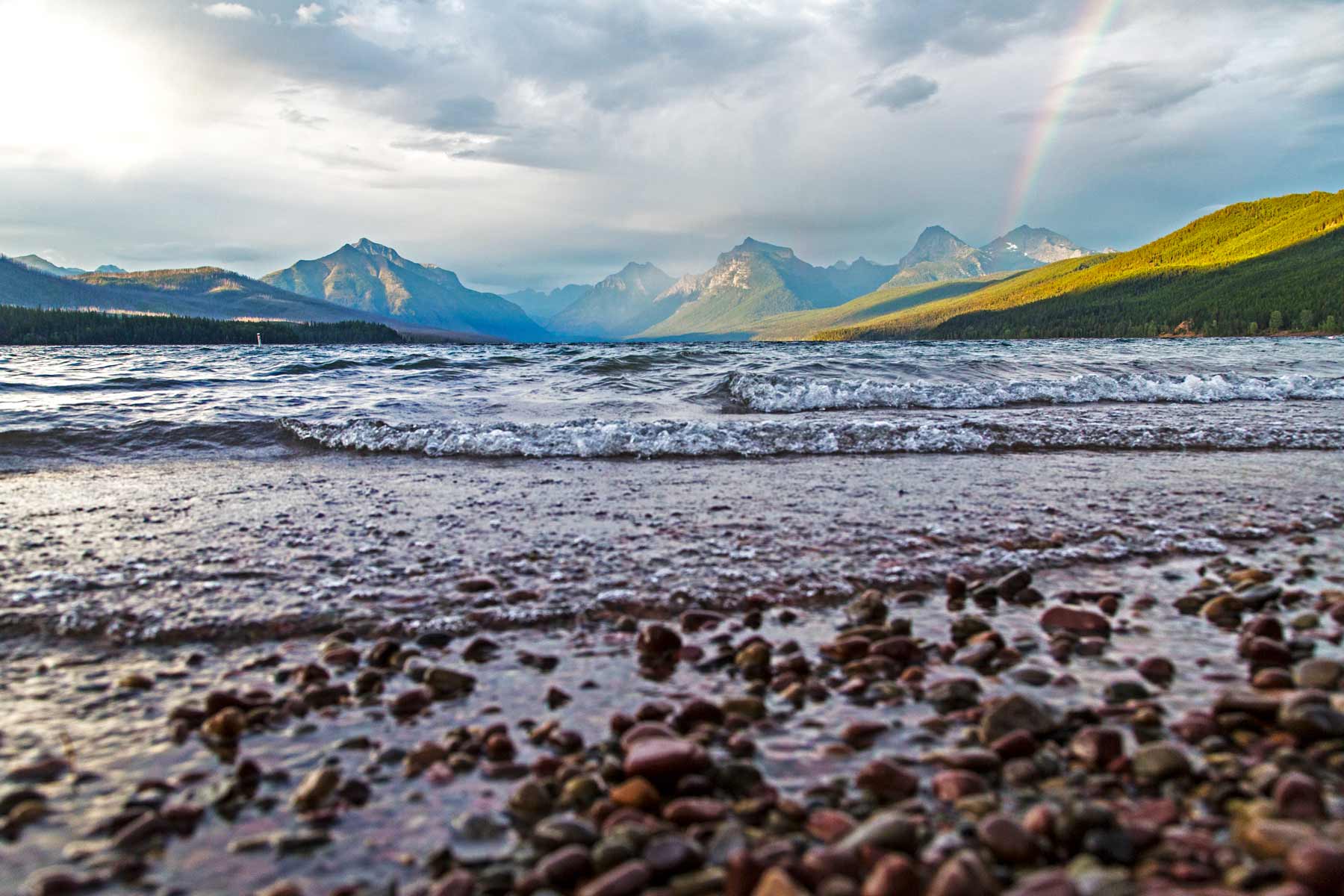
15. Glacier Features 71 Species Of Mammals, 276 Species Of Birds & 1,990 Total Species Of Plants
If you love seeing the flora and the fauna then we’ve saved the best of the Glacier National Park Facts for last.
Plant and animal species thrive in Glacier National Park, with 71 species of mammals, 276 species of birds, and 1,990 total species of plants documented.
Wildlife tours are popular among visitors, and sightings are frequent in the warmer spring and summer months.

Why Trust Us About Glacier National Park?
We’re Jim Pattiz and Will Pattiz, collectively known as the Pattiz Brothers (and sometimes the Parks Brothers) and we absolutely LOVE the national parks.
You should probably know that we don’t just make this stuff up out of thin air. We’ve spent our entire adult lives exploring and filming America’s national parks and public lands.
We’ve worked with the National Park Service, the Department of Interior, USDA, and the U.S. Forest Service for years creating films on important places and issues. Our work has been featured in leading publications all over the world and even some people outside of our immediate family call us experts on the national parks.

Meet The Parks Brothers
Map Of Glacier National Park
List Of Glacier National Park Facts
- The Earliest Peoples To Inhabit Glacier Were The Kootenai
- Lewis & Clark Enjoyed Spectacular Views Of Glacier National Park
- A Man Who Lived Among The Native Americans Christened The St. Mary Lakes
- A Railroad Tycoon Helped To Establish Glacier National Park
- Glacier National Park Helped To Give Birth To “Parkitecture”
- A Cattle Queen Was One Of The Early Visitors To Glacier National Park
- An Influential Editor & Conservationist Nicknamed Glacier The “Crown Of The Continent”
- Glacier National Park Features An Engineering Marvel
- The World’s First International Peace Park Is At Glacier
- The Night Of The Grizzlies Changed How People Interacted With Bears At Glacier
- The Mountain Goat Is The Official Symbol Of Glacier National Park
- The Number Of Glaciers At Glacier Is Shrinking
- The Going To The Sun Road Appeared In The Classic Film The Shining
- There Are 762 Lakes In Glacier National Park
- Glacier Features 71 Species Of Mammals, 276 Species Of Birds & 1,990 Total Species Of Plants
We Hope You’ll Follow Our Journey

Our goal here at More Than Just Parks is to share the beauty of America’s national parks and public lands through stunning short films in an effort to get Americans and the world to see the true value in land conservation.
We hope you’ll follow our journey through the parks and help us to keep them the incredible places that they are. If you’re interested in joining the adventure then please sign up below!
Tips for Visiting Glacier National Park (or any national park)
Permit Systems and Reservations
Check to see if the national park you’re visiting has a permit or reservation system in place before visiting. As parks become increasingly crowded more has to be done to safeguard them which means controlling the hundreds of millions of people who visit these places each year.
Popular national parks with reservation systems of some kind include Yosemite, Yellowstone, Zion, Rocky Mountain, Glacier, Arches, Acadia, Denali, and more.
Want Less Crowds? Try a National Forest!
Try visiting a national forest while you’re on your trip to avoid the crowds. There are 155 national forests in America, many of which are equally as beautiful as the national parks they neighbor and only see a fraction of the visitors.
For example, try the Flathead National Forest next to Glacier National Park, the Bridger-Teton next to Grand Teton, and the Dixie which borders nearly all of the Utah National Parks.
Practice Safety, Seriously
National parks are amazing but wild places so it is essential to practice basic safety while visiting them. Every year people die while vacationing in national parks. This is easily avoided by:
- Sticking to trails
- Checking the weather before going out on a hike
- Maintaining a safe distance between wildlife which means at least 25 yards from most wildlife and 100 yards from predators
- Avoid ledges with steep drop offs
Helpful Related Articles:
Best Things to Do Glacier NP: 15 Epic Things to Do at Glacier National Park
Glacier National Park Itinerary: Ultimate 3 Day Glacier National Park Itinerary
Glacier National Park Hikes: 15 Best Hikes in Glacier National Park
Montana National Parks: 10 Amazing Montana National Parks to Visit
Grand Teton Hikes: 18 EPIC Grand Teton National Park Hikes (Photos + Guide)
Grand Teton Guide: Grand Teton National Park Ultimate Guide
Things to Do Grand Teton: 17 EPIC Things to Do Grand Teton National Park
Grand Teton Maps: The Best Maps for Grand Teton National Park
Things to Do Yellowstone: 15 BEST Things to Do Yellowstone National Park
Yellowstone Facts: 10 AMAZING Yellowstone National Park Facts
Best Airports Near Yellowstone: The BEST Airports Near Yellowstone National Park
The Wyoming National Parks: 10 EPIC Wyoming National Parks: The Complete Guide (+ Photos)
glacier national park facts, glacier national park trivia, glacier national park fun facts, glacier national park facts, glacier national park trivia, glacier national park fun facts, glacier national park facts, glacier national park trivia, glacier national park fun facts, glacier national park facts, glacier national park trivia, glacier national park fun facts, glacier national park facts, glacier national park trivia, glacier national park fun facts,

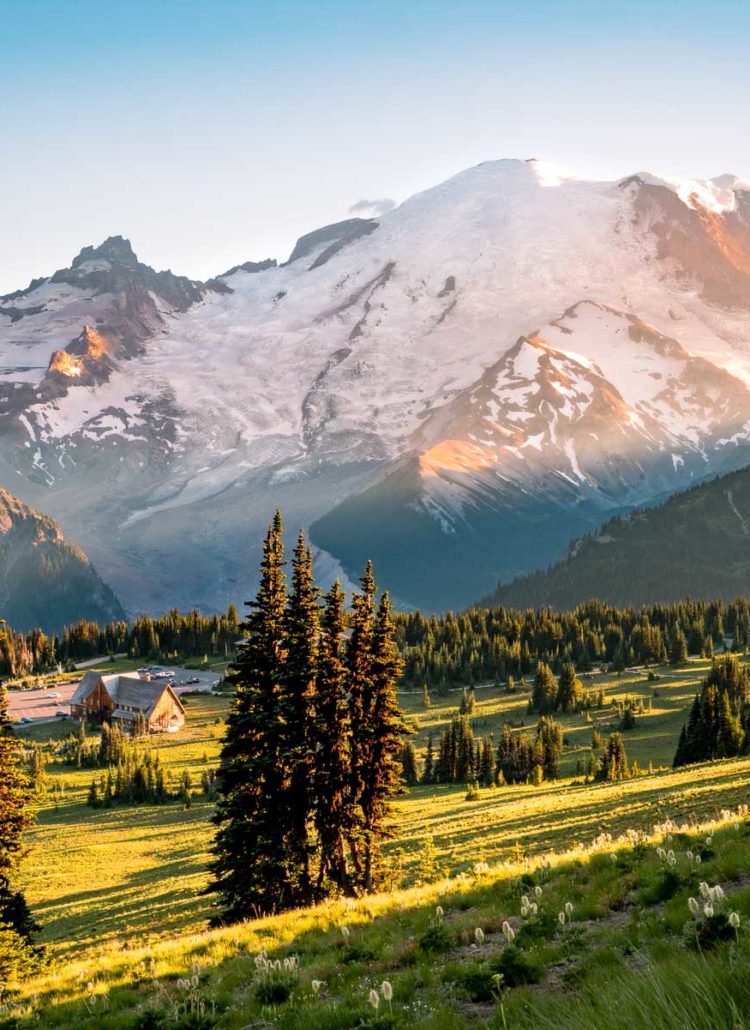

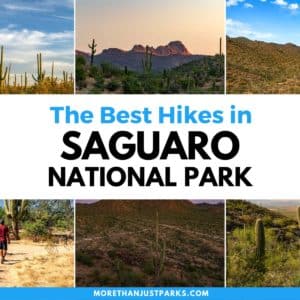

Leave a Reply